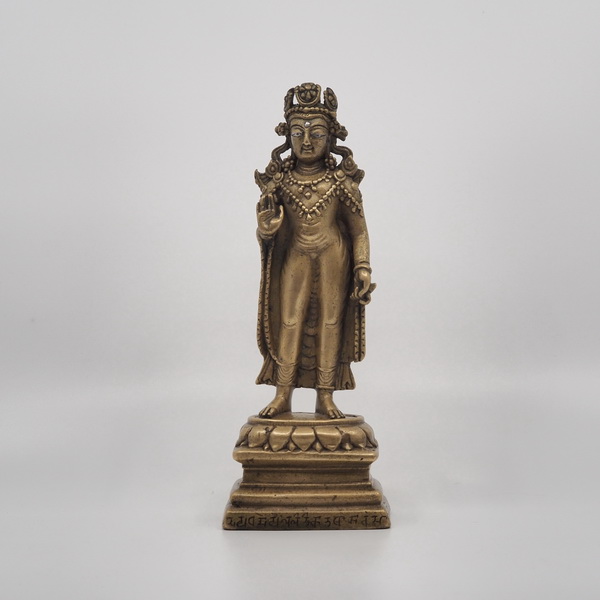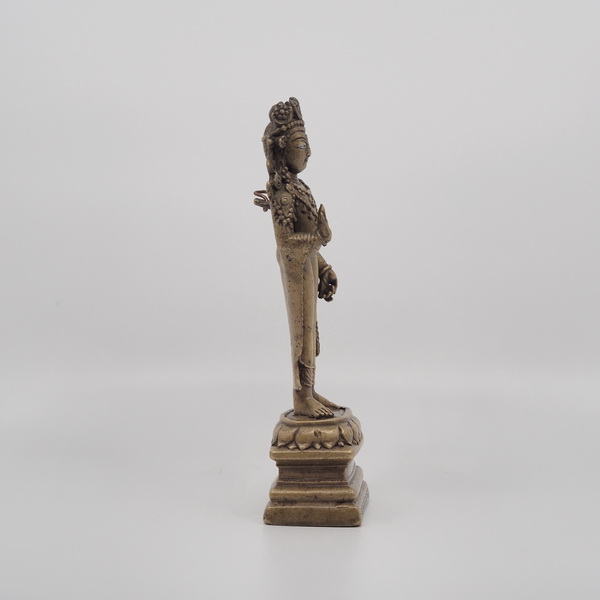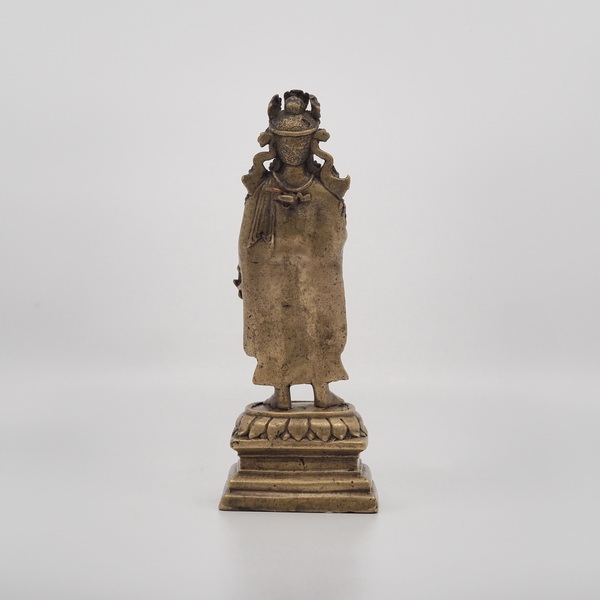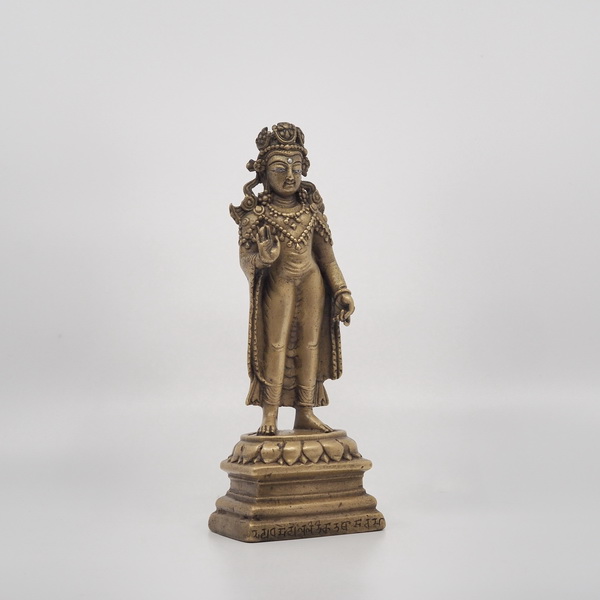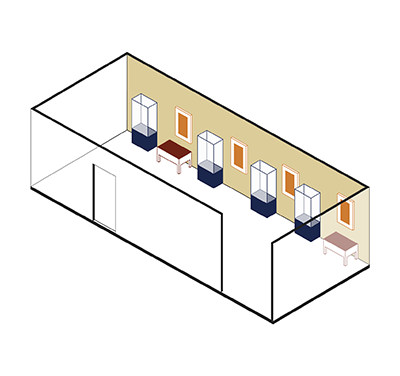
ABS 365
Code: ABS 365
Country: India (north-west)
Style: Karkota Dynasty
Date: 750 - 850
Dimensions in cm WxHxD: 22.3
Materials: Brass
The appearance of an image depends usually on the particular requirements of the patron in charge of the commission. In the case of the described Buddha image it is the cape with triangle corners hanging down over the shoulders and chest. This peculiar use of the cape is found among a number of Buddha images originating over a wide area encompassing Afghanistan, adjoining areas of Central Asia, the Swat valley, and the greater Kashmir area
including Gilgit, as well as Tibet. Independent of direct Sahi intervention, the use of capes can be detected also among some later Tibetan images dating from the Tibetan Monastic period, conspicuously among various iconographies of Buddha, namely Vajradhara, Vajrasattva, or also Sarvavid Vairocana. With the exception of the Tibetan images, all seem to have one particular aspect in common, that they were commissioned by members of the Sahi population. Especially in the context of the abhiseka ritual, the cape is encountered among crowned Buddha images. The use of capes also became a custom in Tibet for the adornment of important Buddha images such as the Vairocanabhisambodhi rock-carvings at lDan ma brag (804/816) in Eastern Tibet. The transmission of this feature possibly occurred during the Tibetan occupancy of the western parts of Central Asia and the adjoining Himalayan areas during the Tibetan imperial period (c. 600-842).
On the front and the right side of the pedestal there is a single line dedicatory Sanskrit inscription in Proto-Sarada script recording the gift by a lay woman:
Front/ deyadharmo yam lalitika[yah] tatha sardham ma/
right side/tapitrabhya a[matapitrbhyam]. "This is the pious gift by Lalitika together with her mother and father"'. (Dr. Otto von Hinüber)
Formerly Collection Ulrich von Schroeder, 2019-06.
Adhikary, Surya Mani, 1996. The Khasa Kingdom: A Trans-Himalayan Empire of the Middle Ages. Jaipur: Nirala Publ.
Klimburg-Salter, Deborah, 2005. "Mahakasyapa and the Art of Bamyan". South Asian Archaeology 2001: Proceedings of the Sixteenth International Conference of European Association of South Asian Archaeologists, held in Collège de France, Paris, 2-6 July 2001. . European Association of South Asian Archeologists. Edited by Catherine Jarrige and Vincent Lefevre. Vol. Il: 535-549, 16 figs. [Crowned Buddhas) [Pdf File]
von Schroeder, Ulrich, 2001. Buddhist Sculptures in Tibet. Vol. One: India & Nepal; Vol. Two: Tibet & China. Hong Kong: Visual Dharma Publications, Ltd..
von Schroeder, Ulrich, 1981. Indo-Tibetan Bronzes. Hong Kong: Visual Dharma Publications, Ltd.. pl. 15F; 118, pl. 16B; 128-129, pl. 21F
von Schroeder, Ulrich, 2001. Buddhist Sculptures in Tibet. Vol. One: India & Nepal; Vol. Two: Tibet & China. Hong Kong: Visual Dharma Publications, Ltd.. Volume One: India & Nepal: pls. 14A-B, 16A, 22, 32, 36A-C; Volume two: Tibet & China : pls. 34C-D, 272F, 313A, 329B-C
von Schroeder, Ulrich, 2010. Buddhist Sculptures of the Alain Bordier Foundation. Hong Kong: Visual Dharma Publications, Ltd..

